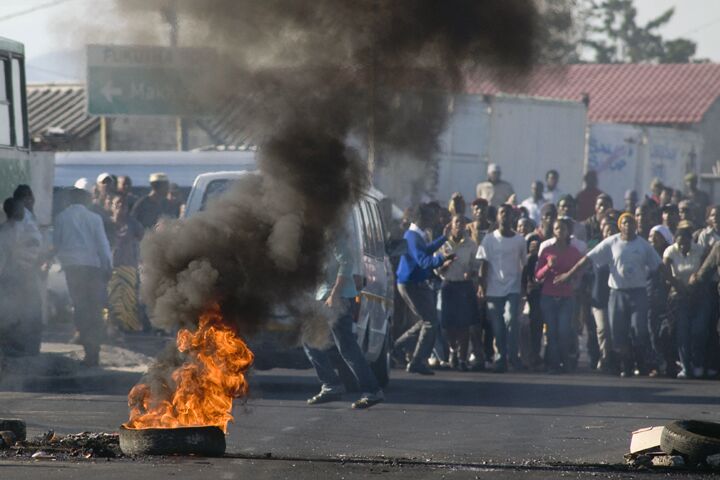
Necklacing Brings Mob Terror to South African Slums
The lack of police protection and action against crime is causing a resurgence of mob rule in South African slums. In South African slums the rates of robbery, rape and murder are among the highest in the world.
In the township of Khayelitsha there has been a growing number of mob vigilante slayings known as necklacing. Victims have a car tire shoved over their shoulders and gasoline poured into the tire. The tire is then ignited, causing a gruesome and cruel death.
Accused of theft, Ncedile Gigi and two others were necklaced in March by a mob that was fed up with poor police practices. The heat from the flames fused Gigi’s body with that of another, and the charred remains were left on a sandy patch of ground where children normally play soccer—a macabre warning to others and a grim reminder of the social problems that plague Africa’s biggest and most developed economy.
For South Africans, the violence brings back to the foreground the days of apartheid when suspected collaborators of the white minority government were executed by necklace.
Since January, over 10 young men have been executed in this manner. The executions were based on mob accusation and hearsay, not on investigation and proof.
Although Gigi’s body was removed from the sand dune a few hours after his execution, his body is still not buried because his remains cannot be distinguished within the fused pair.
“The way my brother died is very painful. We are waiting for dna tests,” Gigi’s older sister, Kholiswa, told Reuters in her home, a tin and wood shack in a sea of shacks. “Maybe if I was there I could try to stop them—maybe just a beating only and not go so far as to burn him.”
South African police and government officials are concerned that citizens are taking justice into their own hands. “This is actually a deeply worrying trend for the police and government because citizens do not have faith in formal institutions and are resorting to violence,” said Hennie van Vuuren, director of the Cape Town office for the Institute for Security studies. “It is very possible that some of the victims may well be innocent.”
The escalating violence in Khayelitsha—Cape Town’s largest black township of 750,000 people—has caught the attention of prosecutors and the new national police commissioner, Riah Phiyega.
Phiyega, South Africa’s first woman police chief, is under incredible pressure to restore credibility and morale in the scandal-plagued police force.
Many consider fixing the problems in Khayelitsha the right move.
Even though new police cars patrol its troubled streets in order to prevent crime, residents remain skeptical because of historic delays in police response to incidents, mishandled investigations and police corruption.
“The police don’t do their job,” said Telford Thanduxolo, tending a small vegetable patch close to where Gigi was executed. “And if the police fail to do their job, then the community must take over.”
The problems in Khayelitsha are not with the police alone. Even when police act against crimes such as necklacing, residents often refuse to cooperate. Reuters reported, “But the wheels of South African justice grind slowly at the best of times, and few Khayelitsha residents are going to go out of their way to put the agents of an accepted vigilante justice system behind bars.”
It is not likely that Khayelitsha’s problems will be solved any time soon. However, there is a solution to bring peace and safety to South Africa’s slums. Read “Outside the Stadium” to see what South Africa is like today. But also be sure to read our online booklet South Africa in Prophecy to see the incredibly wonderful future just over the horizon for South Africa.
